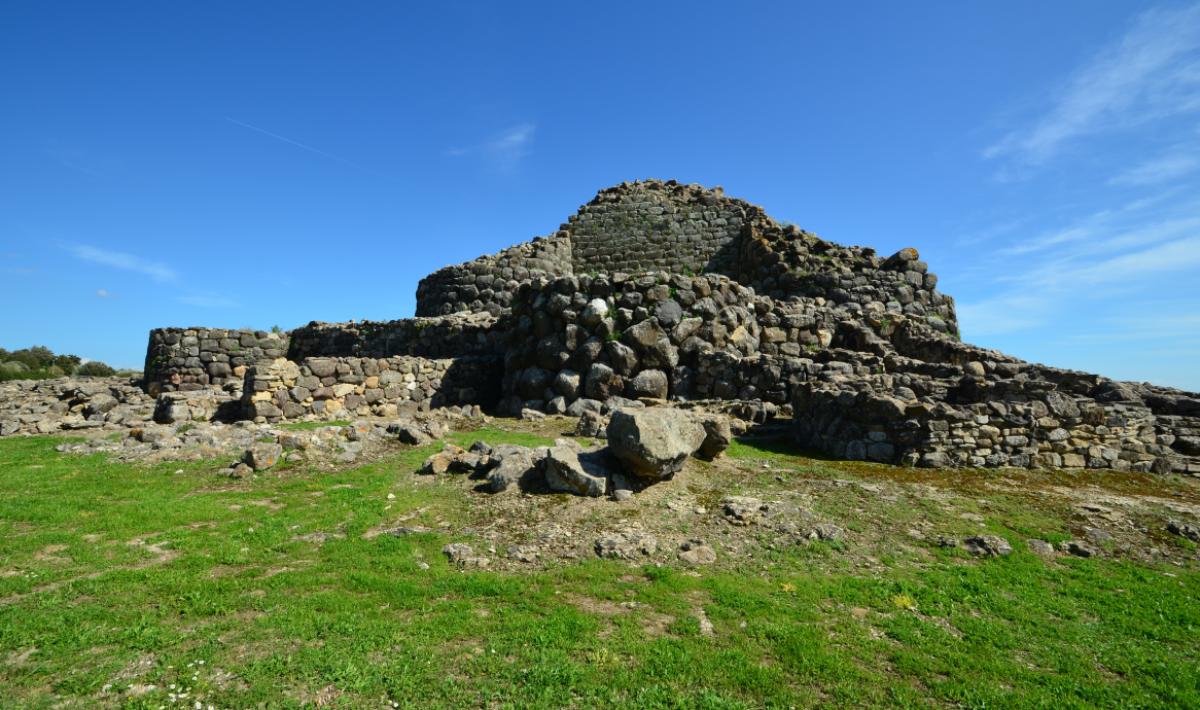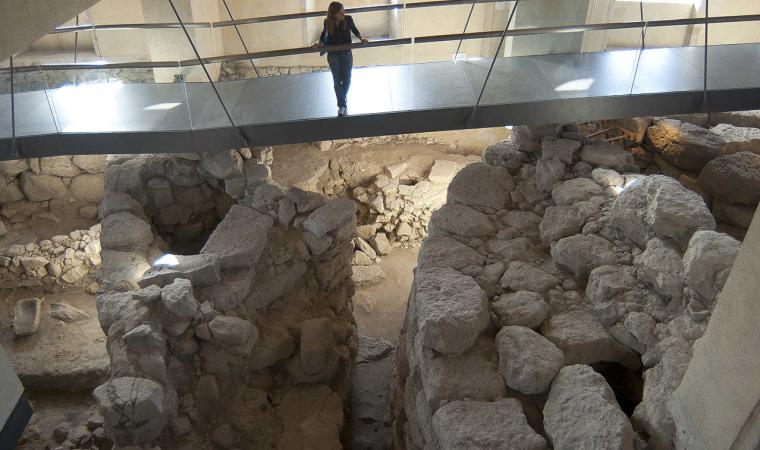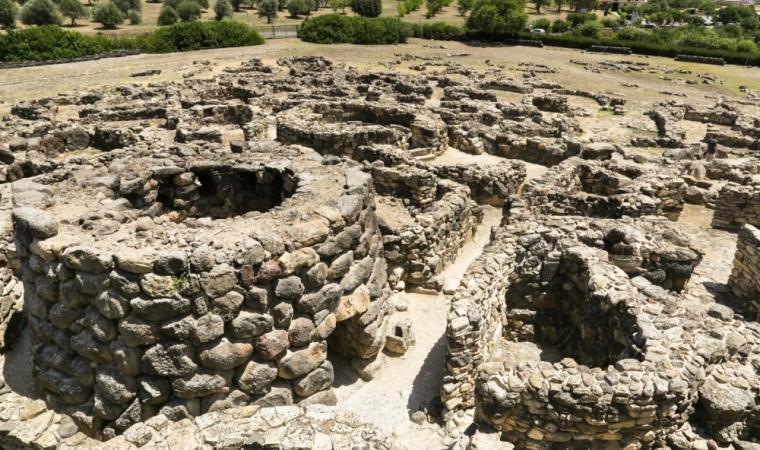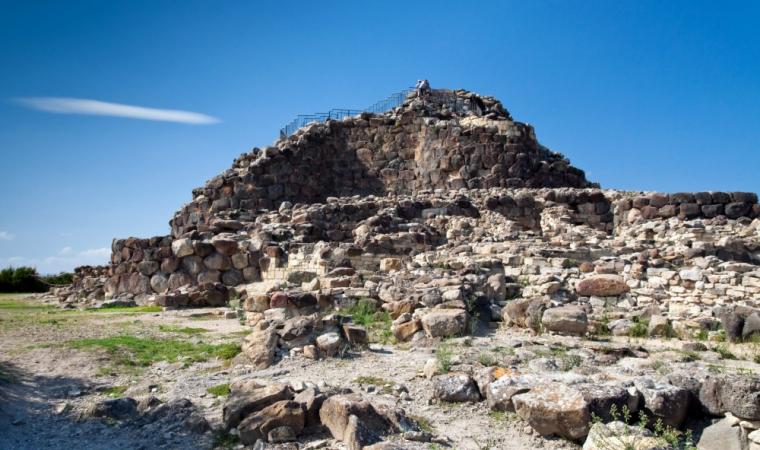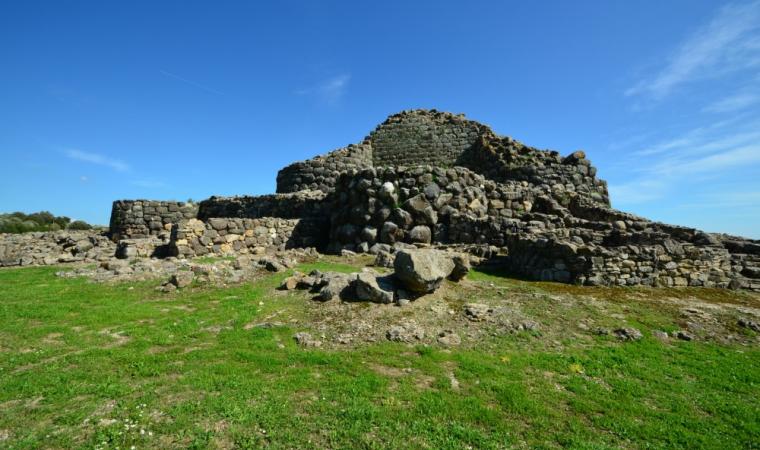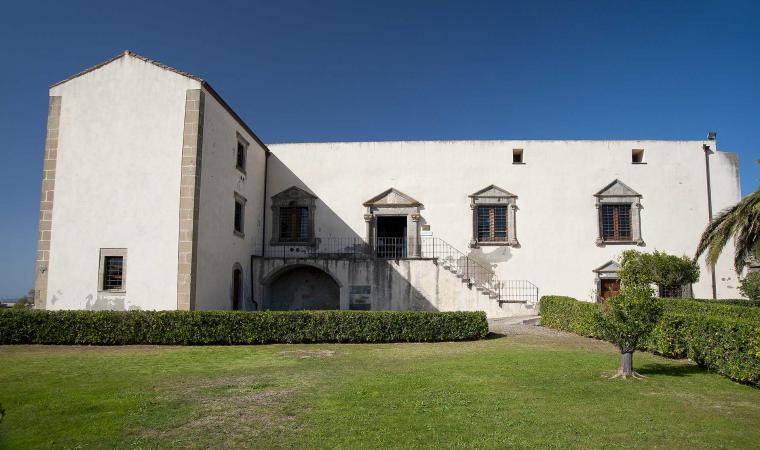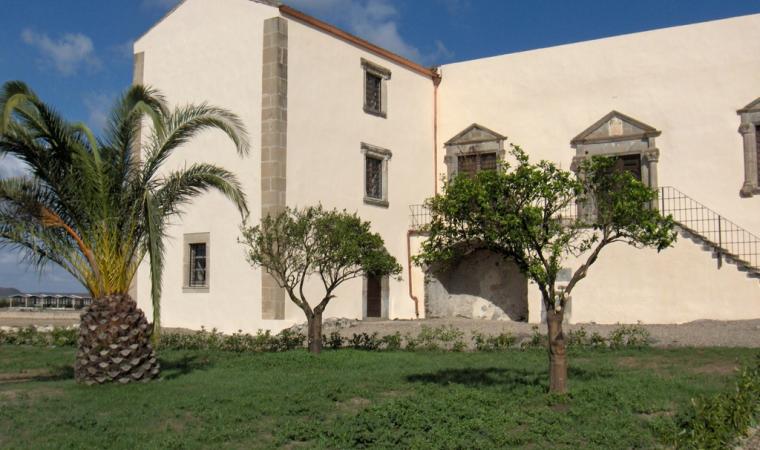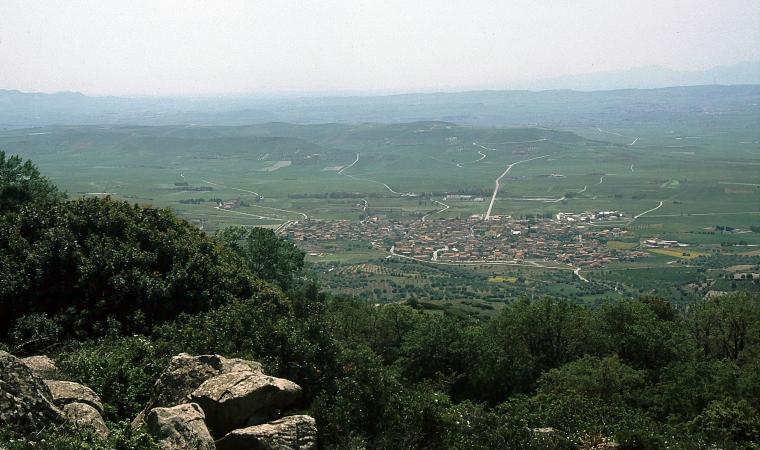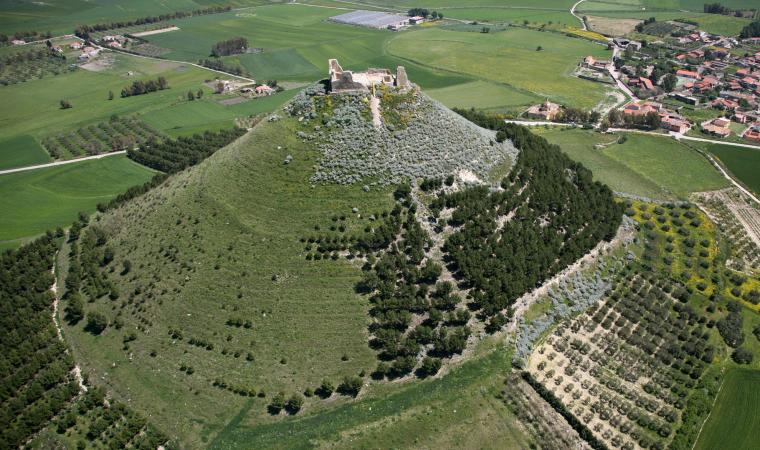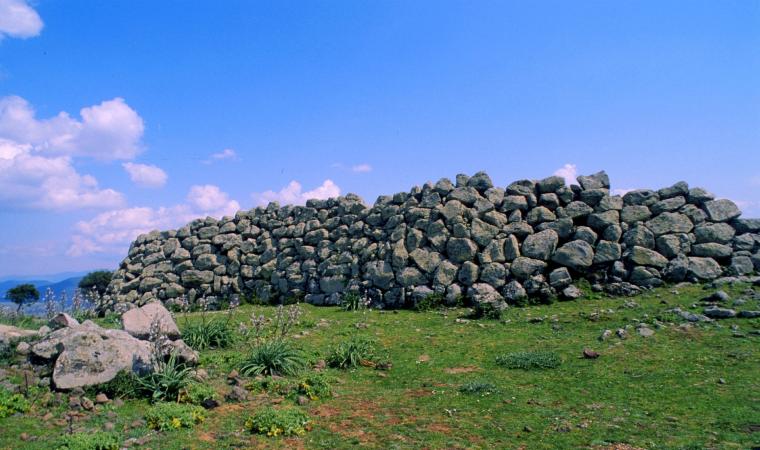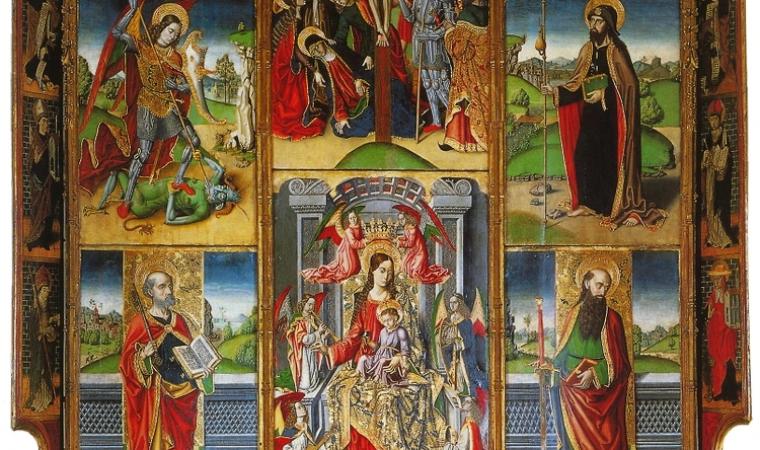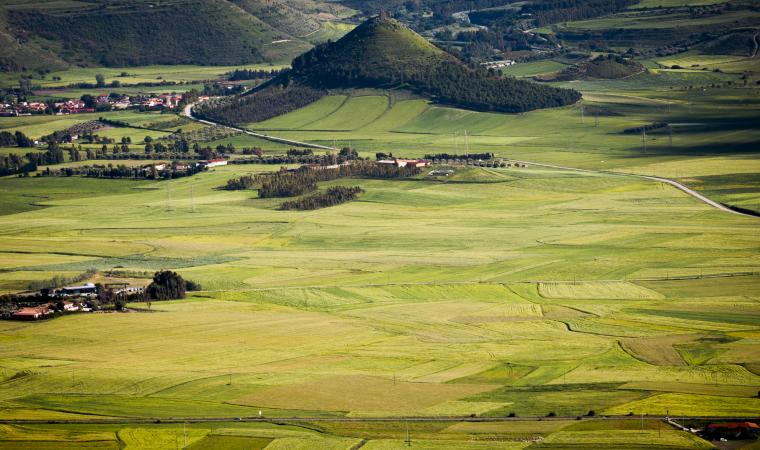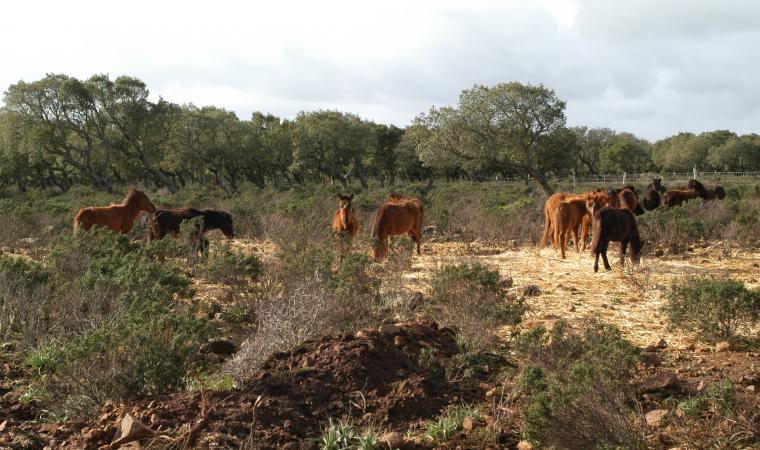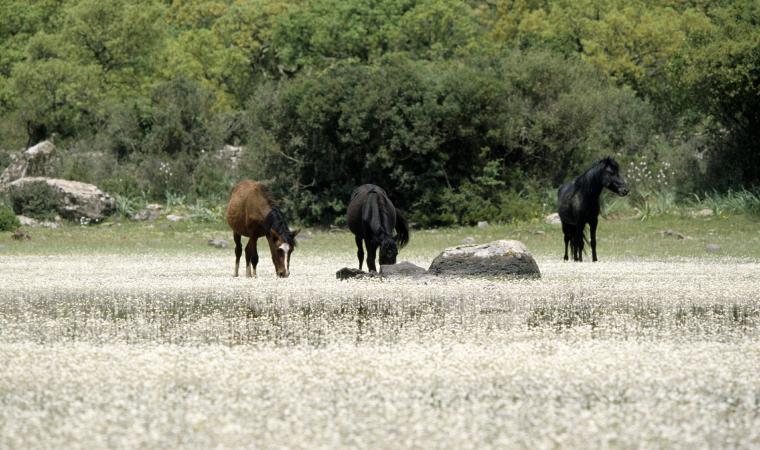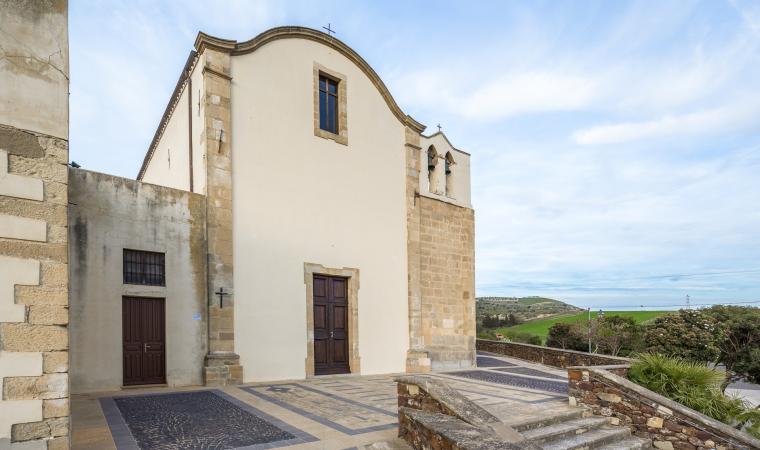At Barumini there is a special atmosphere: since prehistoric times the present village was the centre of power and the reference point for a rich and fertile territory, the Marmilla. On Nuraxi, the most imposing (and best preserved) of the thirty Barumesi nuragic sites, as well as the most important legacy that the civilization 'of the towers' has left us, stands witness to the town's importance. The archaeological area includes a complex nuraghe and an extensive village of huts, a unique place, which UNESCO declared a World Heritage Site in 1997. The impressive site came to light thanks to the excavations conducted in the mid-20th century by Giovanni Lilliu. The cultural center located a short distance from the nuraghe was named after 'the father' of Sardinian archaeologists, where events, exhibitions and concerts are held.
Su Nuraxi, made of basalt, volcanic stone from the nearby Giara park, has a stratification of two thousand years, from the 16th century BC to the 7th century AD. The complex consists of a central tower (keep) and four corners connected by a bastion, surrounded by a labyrinth of 50 huts, wells and cisterns.
The keep is the oldest tower; it was originally 18.5 metres tall and built in the Middle Bronze Age (XVI-XIV century BC). It is composed of three linked rooms on three floors, with protruding walls that get thinner as you climb. I was covered by a tholos (false dome). Subsequently, in the late Bronze Age (XIV-XII BC), a strong body wall was built at the single-tower nuraghe with four smaller towers - then 14 metres high - connected by battlements and oriented according to the cardinal points. From the four-lobed bastion it was possible to access a courtyard with a well, which connected the rooms of the four towers, all composed of two superimposed chambers, also covered by tholos. The oldest part of the village was built in the same period, and an antemural with three towers was erected as a defensive wall, later extended to include other towers in the final Bronze Age (XI-IX BC). The quadrilobed bastion was also strengthened with 3 metre-thick walls. The circular huts with a single room and the wooden, cone-shaped rooves also date back to the same period. The most significant is 'hut 80', called 'the meeting hut', with a seat running around the edge and five niches in the walls where vases, ornaments, tools, weapons and votive images were found, suggesting it was used for the community's assemblies. At the beginning of the Iron Age (IX-VI BC), the village was almost destroyed; on the ruins a settlement was built using innovative techniques and furnishings, showing an advanced community in contact with other civilizations. The new huts, with 'central court' or 'sector' layout, had circular walls and more square-shaped rooms, converging in a radial pattern around a paved courtyard. The most significant space is the 'rotonda', a small room covered with a tholos, equipped with a seat and a central basin that was used to hold water, used in the lustral rites linked to the cult of water. The su Nuraxi huts are unique in the Island due to their complexity and architectural evolution. In the 5th century BC, the Punic occupation took over from the nuragic civilization. The two cultures mingled, and the village's appearance and life did not undergo major changes. In II-I BC, some areas of the settlement were reused by the Romans as burials. The site was inhabited until the III century AD and was frequented in the Early Middle Ages (VII century).
The archaeological heritage of Barumini boasts another marvel: the complex nuraghe on Nuraxi 'e Cresia, which came to light at the end of the 20th century during the restoration of Casa Zapata, the residence of Sardinian-Aragonese barons, built just above the nuragic building starting from the mid-16th century. Today, the noble residence, consisting of a palace, a garden, a large courtyard and agricultural relevance, is home to the homonymous museum center, divided into three sections: archaeological, historical, archival and ethnographic.

